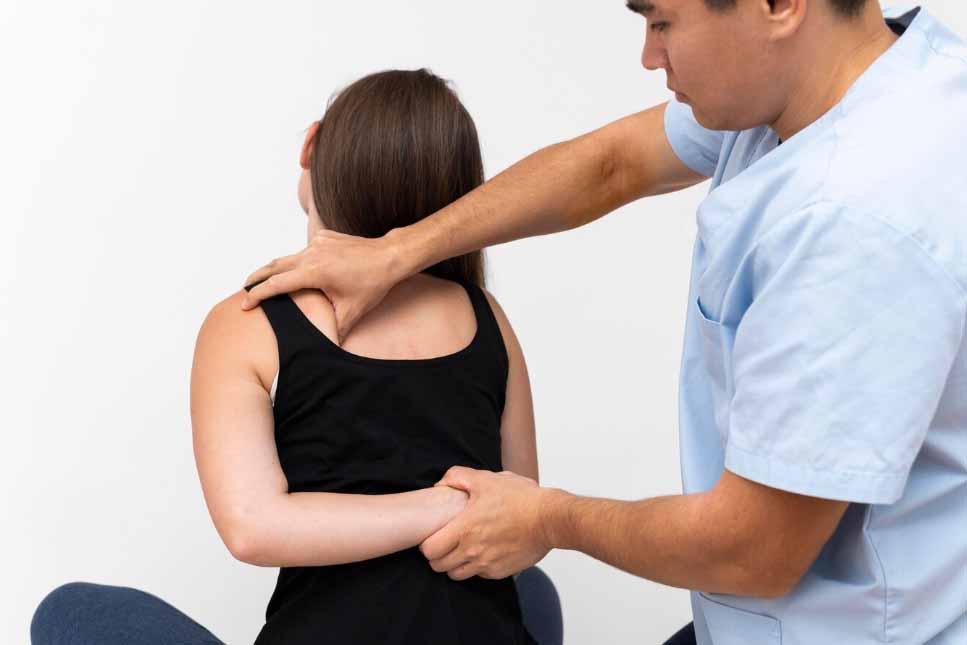If you or someone you love has been diagnosed with stiff person syndrome, it can be overwhelming and confusing. This rare autoimmune neurological disorder affects the muscles and can cause stiffness, spasms, and muscle weakness. Living with stiff person syndrome can be challenging, but with the right care and support, individuals can manage their symptoms and improve their quality of life.
Table of Contents

In this article, we will provide an overview of the condition, discussing its symptoms and practical care tips to help individuals manage the syndrome effectively.
Key Takeaways:
- Stiff person syndrome is a rare autoimmune disorder that affects muscle function.
- Symptoms include muscle stiffness, spasms, and weakness.
- Treatment options include medication, therapy, and lifestyle adjustments.
- Early diagnosis and holistic management are essential for improving quality of life.
- Support resources are available to help those with stiff person syndrome and their families.
Understanding Stiff Person Syndrome

Stiff person syndrome (SPS) is a rare neurological disorder characterized by muscle stiffness and rigidity, resulting in difficulties with standing, walking, and performing daily activities. Affecting only 1 in 1,000,000 individuals, Stiff Person Syndrome is considered a rare autoimmune disease.
The exact cause of Stiff Person Syndrome is unknown; however, studies suggest it is triggered by abnormal autoimmune responses that attack and damage the central nervous system. This damage leads to alterations in the communication between nerve cells, resulting in the characteristic muscle stiffness and spasms.
While anyone can develop Stiff Person Syndrome, it is more prevalent among women than men, and typically affects individuals between the ages of 30 and 60. Other risk factors include a family history of autoimmune diseases, exposure to certain viruses, and the use of certain medications.
Due to the rarity of the condition and the nonspecific nature of its symptoms, Stiff Person Syndrome is often misdiagnosed, with an average delay of 7 years before an accurate diagnosis is made. Therefore, early recognition and diagnosis are crucial for effective management of the condition.
Related Articles
How to Prevent Bloating in Winters and Define Balanced Diet
What causes Heart Attacks in Young People : Improving Heart Health in Men Over 50
Common Symptoms of Stiff Person Syndrome
The symptoms of Stiff Person Syndrome vary widely between patients but commonly include:
- Progressive stiffness and rigidity of muscles
- Muscle spasms and involuntary contractions
- Balance and coordination difficulties
- Heightened sensitivity to touch, light, and sound
- Anxiety and emotional distress
The severity of symptoms can range from mild to debilitating, affecting an individual’s ability to work, perform daily activities, and participate in social activities.
Diagnosis and Stiff Person Syndrome Treatment

The diagnosis of Stiff Person Syndrome involves a combination of medical history, physical examination, and laboratory tests, including blood tests and electromyography (EMG). In some cases, physicians may order imaging tests to rule out other conditions that may mimic Stiff Person Syndrome.
Currently, there is no cure for Stiff Person Syndrome; however, several treatment options are available to help manage the symptoms and improve the patient’s quality of life. Treatment typically involves the use of medications such as benzodiazepines and baclofen to control muscle stiffness and spasms, and immunomodulatory therapies to reduce autoimmune responses.
Physical therapy and rehabilitation can also help improve muscle strength and mobility, while psychological support and counseling can help patients cope with the emotional distress associated with the condition.
In conclusion, while Stiff Person Syndrome is a rare condition, it can severely impact an individual’s quality of life. Early recognition and diagnosis, along with a multidisciplinary approach to management, can help individuals with Stiff Person Syndrome manage their symptoms and lead a fulfilling life.
Recognizing the Symptoms
Stiff person syndrome is characterized by muscle stiffness, spasms, and muscle weakness. These symptoms can occur in any part of the body but commonly affect the trunk muscles, hips, and legs.
As the name suggests, muscle stiffness is the most noticeable symptom of this condition. It can be mild or severe and range from occasional cramps to a complete inability to move. Spasms are another common symptom and can be triggered by sudden movements, noises, or emotional stress. Muscle weakness can also occur and make it challenging for individuals with stiff person syndrome to perform daily activities like walking or standing up.
Other symptoms of the condition can include:
- Difficulty controlling body movements
- Postural instability and balance problems
- Increased anxiety and stress
- Startle reflex
If you or someone you know is experiencing these symptoms, it is crucial to seek medical attention and get an accurate diagnosis. Early diagnosis and treatment can help manage the symptoms of stiff person syndrome and improve overall quality of life.
Effective Care Tips for Stiff Person Syndrome

Living with stiff person syndrome can be challenging, but there are many practical care tips that can improve your quality of life and help you manage the symptoms effectively. Here are some effective care tips:
1. Stiff Person Syndrome Treatment Options
Speak to your doctor about different treatment options available for you. These options may include medications, such as muscle relaxants and pain relievers, and intravenous immunoglobulin therapy.
2. Therapy Techniques
Physical and occupational therapy can help improve muscle strength and flexibility. Additionally, techniques like meditation, deep breathing, and yoga can help reduce stress and muscle tension.
3. Lifestyle Adjustments
Make changes to your lifestyle that promote better overall health and help reduce symptoms of stiff person syndrome. This can include a healthy diet, regular exercise, and getting enough rest.
4. Support Resources
Reach out to support resources, such as patient advocacy groups and online message boards for individuals with stiff person syndrome. These resources can provide a sense of community and support, and can also offer helpful information about the condition.
It’s important to remember that living with stiff person syndrome is a journey, and there is no single solution that will work for everyone. But by incorporating these care tips into your daily routine, you can take control of your condition and improve your overall wellbeing.
Conclusion
In conclusion, understanding the symptoms and management of stiff person syndrome is crucial for those affected by the condition. Early diagnosis and comprehensive care can help individuals lead a fulfilling life despite the challenges posed by the syndrome.
Managing stiff person syndrome requires a multidisciplinary approach involving medication, therapy, and lifestyle adjustments. Fortunately, there is a range of treatment options available to help alleviate symptoms and improve overall quality of life.
While stiff person syndrome can be a debilitating condition, it is important to remember that it is manageable with the right care and support. Therefore, individuals with the syndrome should seek medical attention as early as possible and work closely with healthcare professionals to develop a personalized care plan.
We hope this article has provided you with valuable insights into stiff person syndrome and its management. Remember, with the right care and support, individuals living with stiff person syndrome can lead a fulfilling and meaningful life.
FAQ
1. What is stiff person syndrome?
Stiff person syndrome is a rare neurological disorder characterized by muscle stiffness and spasms. It can significantly impact a person’s mobility and overall quality of life.
2. What are the common symptoms of stiff person syndrome?
The most common symptoms of stiff person syndrome include muscle stiffness, spasms, and muscle weakness. These symptoms can vary in severity and may affect different areas of the body.
3. What causes stiff person syndrome?
The exact cause of stiff person syndrome is unknown. However, researchers believe that it is an autoimmune disorder in which the body’s immune system mistakenly attacks the nerve cells responsible for muscle movement.
4. How is stiff person syndrome diagnosed?
Diagnosing stiff person syndrome can be challenging, as it shares symptoms with other neurological conditions. A comprehensive medical evaluation, including a detailed medical history, physical examination, and specific tests, is necessary for an accurate diagnosis.
5. How is stiff person syndrome treated?
While there is no cure for stiff person syndrome, various treatment approaches can help manage the symptoms. These may include medication, physical therapy, occupational therapy, and psychological support. The treatment plan is tailored to each individual’s specific needs.
6. Can stiff person syndrome be prevented?
As the exact cause of stiff person syndrome is unknown, there are no specific preventive measures. However, early diagnosis and appropriate management can help minimize symptoms and improve the individual’s quality of life.
7. Are there any support resources available for individuals with stiff person syndrome?
Yes, there are several support resources available for individuals with stiff person syndrome. These may include support groups, online communities, and organizations dedicated to raising awareness and providing information about the condition.



